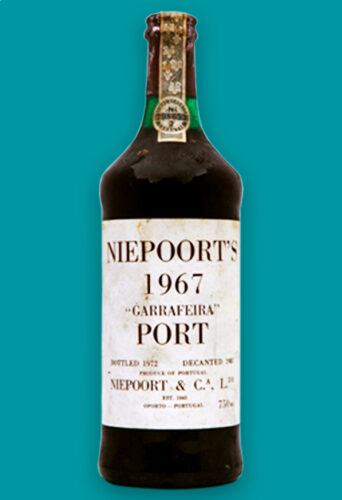Baghera/wines, with the help of Dominique Fornage, celebrates the most legendary port of all – Quinta do Noval “Nacional” and offers you an exceptional evening around 11 vintages.
Dominique Fornage will host this exceptional evening around the 11 vintages of Quinta do Noval:
- 2004
- 2003
- 2000
- 1997
- 1994
- 1991
- 1983
- 1970
- 1967
- 1966
- 1963
This Quinta, whose name appeared in 1715, is considered the most prestigious.
António José da Silva, trader from Porto, acquired Quinta do Noval in 1894, previously devastated by phylloxera. He revives the estate by replanting the vineyards.
In the 1958 vintage, Quinta do Noval is the first house to launch a “Late Bottled Vintage” port, that is to say a vintage port with late bottling, at least 2 years later than the classic Vintage.
Quinta do Noval was also the first to introduce to the Tawnie market with an indication of the number of years of breeding: 10, 20 and 40 years.
Quinta do Noval was transferred to AXA Millésimes in 1993. The famous Christian Seely has since been its managing director.
As in many other “Quinta”, the harvest which is poured into “lagares” (large, wide but low fermentation tanks) is crushed. Fermentation starts quickly and takes place in a fairly short time. At a chosen time, when there is a certain level of unfermented sugar, we proceed to the addition of a grape brandy grading 77 degrees. The final alcohol will be around 20%. The press and press juices are still assembled.
The grape varieties planted (between 100 and 500m) at Quinta do Noval are mainly: Touriga Nacional, Touriga Franca and Tinta Roriz. Others also exist: Tinta Barroca, Tinto Cão, Tinta Francisca ...
The vines are increasingly worked according to standards respecting the environment. All are classified "A", that is to say in the sectors considered to be the best.
Dominique Fornage
The success of the Quinta do Noval rests mainly on a legendary vine of 2ha (6,000 feet), not grafted, signed only in great vintages under “Nacional”. The varietals of this plot are: Touriga Nacional, Touriga Franca, Tinta Roriz, Tinto Cão and Sousão.
The Quinta do Noval vineyard produces 30 to 35hl / hectare. The plot of Nacional gives only about 12 hl / hectare. Cultivation and harvesting are done entirely by hand.
The Nacional is vinified in the same way as the other Vintage, but its entire harvest is raised for two years in an old oak barrel with a capacity of 2,500 liters.
The few bottles produced (2,500) sells extremely expensive because of the quality deemed unmatched by amateurs.
The vine was planted in 1925 and spawned its first Nacional in the 1931 vintage. This 1931 Nacional is considered by the lucky few to have drunk it as the greatest Port of all time. Finding them right now is a miracle.
As this fabulous Porto benefits from a positive evolution that spans decades, some “younger” Nacional begin to pretend to equal the mythical 1931.
The exceptional vertical organized on 11 November 2017 of 11 of the best declared growths undoubtedly appears as a source of valuable information on this subject.
Dominique Fornage
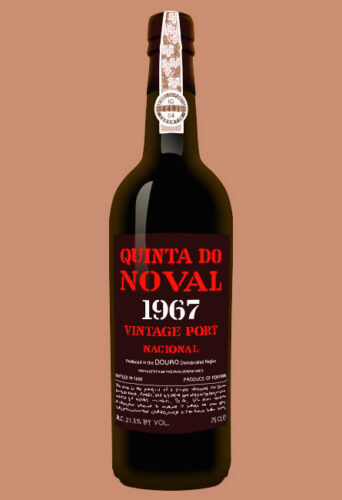
A world tour of the best achievements of the illustrious 1982 vintage.
As soon as it was released, a number of tasters listed the 1982 vintage as legendary, comparable to some great icons of the 20th century. 35 years later, Baghera/wines has the immense pleasure of inviting amateurs to a retrospective tasting of the majestic 1982 vintage: a trip around the world of the best achievements of this exceptional year.
Dominique Fornage will lead this trip.
- Château Latour
- Château Margaux
- Château Mouton-Rothschild
- Château La Mission Haut-Brion
- Château Lynch-Bages
- Château Gruaud-Larose
- Château Trotanoy
- Château d’Yquem
- Clos Ste. Hune (F.E. Trimbach)
- Champagne Taittinger Collection
- Hermitage “La Chapelle” (P. Jaboulet Ainé)
- Corton-Charlemagne (Bouchard P&F)
- Vega Sicilia “Unico”
- Quinta do Noval “Nacional”
- Penfold’s Grange Hermitage
A passionate man speaking of 1982 immediately thinks of Bordeaux, which, that year, produced a legendary vintage that remains a dream to this day.
But what about other regions? Did they also produce great wines? The goal of this exceptional event is to review the Bordeaux 1982 vintage thirty five years after their harvest and to compare other famous vintages of this vintage.
Here is a presentation of the year 1982 for the Bordeaux reds...
This vintage was immediately praised. The climatic conditions were among the most favorable of the century. June was hot, sunny and dry. The heat also accompanied July, and the vegetative cycle was perfect. August, slightly cooler, saw some beneficial thunderstorms swell the berries. September turned everything into a miracle: three weeks of intense heat without a drop of rain, with a very warm south wind. The harvest gave practically overripe grapes, with a high alcohol content.
This basic richness worried some commentators because it was accompanied by a relatively low acidity (however appreciably the same as that of 1959 or 1961). The fear of an overly tender wine did not last long, as the 1982s turned out to be the most concentrated and richest in extract since 1961.
The vintage also experienced record quantitative production at the time, which is still a subject of controversy. For some, the 1982 will not last as long as the very low-production vintages, such as 1945 and 1961. For others, the keeping will not be a problem, given the quality of the wines.
1982 arrives at a pivotal time. The high temperatures at harvest and during alcoholic fermentation almost degraded the perfection of the fruit. Modern cellar equipment has avoided problems that would have affected earlier similar crops. The experience was then used for the 1985, 89 or 90 vintages, which were also marked by hot weather. But the latter have “benefited” in addition to other important technological changes allowing better “control” of the whole vinification.
I thus allow myself to compare the eras of the great vintages 1961 and 1982. If 1961 makes the perfect link between the era of so-called “old” wines and the advent of modern oenology, 1982 makes the perfect link between so-called “modern” oenology and the technological upheavals of recent years, of which the concentrator is the most striking example.
The wines of 1982 have always been marked by ripe fruit and opulence, glycerol rounding off the enormous extraction. We are truly in the presence of sumptuous wines from the time of harvest until today, and certainly for a long time (for the best).
The veneration carried by the great collectors in 1982 can be compared to that of 1961 or 1945. This relates to the prices that one must pay to acquire them. They were already raised in the spring following the harvest, and have never stopped increasing.
Dominique Fornage
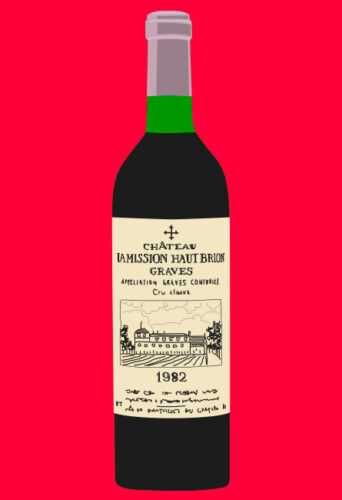
For this Part II dedicated to Saké, Baghera Wines is thrilled to invite you to this “Rare sakés & iconic Champagnes” tasting under the aegis of Gautier Roussille, a French saké expert. Gautier will share his extensive knowledge of this rare eastern wine also called nihonshu that we will be tasting alongside some high-pitched Champagnes – another field where Gautier has proved great skills and knowledge.
- Dassai Beyond * Salon 1988
- Fukugen Junmai * Vouette et Sorbée Fidèle
- Raifuku JG chokarakuchi * Francis Boulard Les Rachais Extra-Brut 2008
- Nabeshima JDG * Agrapart Mineral 2010
- Kikumasamune taruzake JG * R. Bereche Le Cran 2008
- Sohomare Kimoto JDG (mag) * Krug Grande cuvée
- Hyakujuro Jukusei Koshu * Charles Heidsieck réserve privée (mise en cave 1998)
Wine and sake are two drinks deeply rooted in the traditions of their country of origin. They have evolved for centuries in parallel with the cultures which gave birth to them, to the point of becoming inseparable from them in the collective imagination.
Today, like Western culture, wine has become internationalized while, as a result of an island culture, sake has remained almost completely confined to Japan (and to the Japanese diaspora). From this isolation, it has retained a certain original purity, without ignoring the progress of the world around it. As in the rest of Japan, sake has evolved while retaining the strength of its traditions.
Confronting wine and sake therefore becomes a comparative study of Western and Japanese cultures. Many common traits appear while the constraints of the environment and certain radically different philosophical conceptions give rise to two unique drinks.
The first divergence arises from the raw material: the grape contains sugar and many aromatic precursors. Its fermentation is therefore easy and naturally produces wine. Rice, on the other hand, is an inert and almost neutral raw material that man must, by his art, transform into an alcoholic and aromatic drink.
Thus, wine, like a gift from the gods, is born in the vineyard, while sake from the art of men is given as an offering to the gods (the kamis of the Shinto religion).
We will see during two tastings what are the common points and the differences between wine and sake by tasting side by side and comparing these two great cultural drinks. We will deal with grape varieties, terroir, methods and techniques, the conception of taste, quality and the idea of ideal which results from this, the link between these drinks and the cuisine of their respective countries ... we will explore all which makes wine and sake two magnificent cultural drinks, in what brings them together as much as in what opposes them.
Gautier Roussille
A cultural beverage par excellence, its origin merges with that of the Japanese people and their religion: Shinto. Over the centuries, methods of obtaining sake have evolved into one of the most complex forms of beverage in the world.
The first step in obtaining sake is polishing the rice, which involves removing the outer part of the grain, this part being variable. Sakes produced from rice from which more than 40% of the mass was removed during polishing are called “ginjo”. The most prestigious sakes generally fall into this category.
After standing for a while, the rice is soaked for a few minutes and then steamed. After cooling, part of the rice, the “kojimai”, is inoculated with a mushroom, the “koji”. The development of the koji lasts about three days during which the rice is regularly stirred to ensure a homogeneous development of the fungus. The rice on which the koji was developed is called "kome-koji" (kome = rice). It allows the transformation of rice starch into sugar, a step necessary for fermentation.
A mixture of kome-koji, cooked rice and water is then made. This mixture, called “shubo”, is then sown in yeast using various techniques. The yeasts develop for one to two weeks before the population reaches its maximum. Then added to the shubo, three times in four days, is a new mixture of kome-koji, cooked rice and water.
There follows a more or less long period of fermentation at low temperature (from 2 weeks to 1 month, between 6°C and 20°C) which ends during pressing. The raw sake thus obtained will generally be filtered and pasteurized before marketing.
Thanks to this long and exhausting process, rice is transformed into a pure and delicate, aromatic and complex drink, nihonshu.
Gautier Roussille
Let's go further...
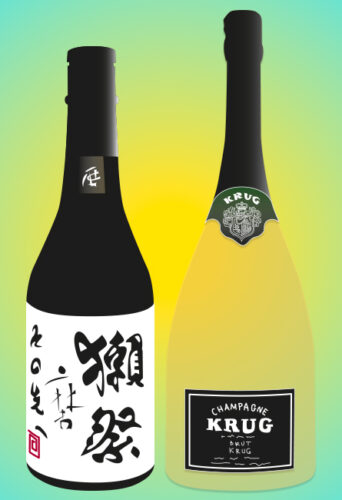
Baghera/wines is thrilled to invite you to this unique “Rare sakes & top white Burgundies” tasting under the aegis of Gautier Roussille.
As a French sake expert, Gautier will share his extensive knowledge of this rare eastern wine also called nihonshu that we will be tasting alongside some carefully selected fine white Burgundies - another field where Gautier has proved great knowledge, being deputy director of Domaine de Montille and Château de Puligny-Montrachet.
- Sohomare Kimoto JDG 2010 * Leflaive 1er cru (surprise !)
- Gaijin JG * Bernard Van Berg Les gouttes 2014
- Okuyokawa Kimoto JDG * Domaine de Montille Puligny-Montrachet 1er Cru Le Cailleret 1998
- Tengumai JDG Omachi * Ponsot Mont Luisant 1er cru 2008
- Kikuyoi JDG * Domaine Guillemot-Michel Viré-Clessé Quintaine 2010
- Kikuhime DG Arabashiri * Domaine V. Dauvissat La Forest 1997
Wine and sake are two drinks deeply rooted in the traditions of their country of origin. They have evolved for centuries in parallel with the cultures which gave birth to them, to the point of becoming inseparable from them in the collective imagination.
Today, like Western culture, wine has become internationalized while, as a result of an island culture, sake has remained almost completely confined to Japan (and to the Japanese diaspora). From this isolation, it has retained a certain original purity, without ignoring the progress of the world around it. As in the rest of Japan, sake has evolved while retaining the strength of its traditions.
Confronting wine and sake therefore becomes a comparative study of Western and Japanese cultures. Many common traits appear while the constraints of the environment and certain radically different philosophical conceptions give rise to two unique drinks.
The first divergence arises from the raw material: the grape contains sugar and many aromatic precursors. Its fermentation is therefore easy and naturally produces wine. Rice, on the other hand, is an inert and almost neutral raw material that man must, by his art, transform into an alcoholic and aromatic drink.
Thus, wine, like a gift from the gods, is born in the vineyard, while sake from the art of men is given as an offering to the gods (the kamis of the Shinto religion).
We will see during two tastings what are the common points and the differences between wine and sake by tasting side by side and comparing these two great cultural drinks. We will deal with grape varieties, terroir, methods and techniques, the conception of taste, quality and the idea of ideal which results from this, the link between these drinks and the cuisine of their respective countries ... we will explore all which makes wine and sake two magnificent cultural drinks, in what brings them together as much as in what opposes them.
Gautier Roussille
A cultural beverage par excellence, its origin merges with that of the Japanese people and their religion: Shinto. Over the centuries, methods of obtaining sake have evolved into one of the most complex forms of beverage in the world.
The first step in obtaining sake is polishing the rice, which involves removing the outer part of the grain, this part being variable. Sakes produced from rice from which more than 40% of the mass was removed during polishing are called “ginjo”. The most prestigious sakes generally fall into this category.
After standing for a while, the rice is soaked for a few minutes and then steamed. After cooling, part of the rice, the “kojimai”, is inoculated with a mushroom, the “koji”. The development of the koji lasts about three days during which the rice is regularly stirred to ensure a homogeneous development of the fungus. The rice on which the koji was developed is called "kome-koji" (kome = rice). It allows the transformation of rice starch into sugar, a step necessary for fermentation.
A mixture of kome-koji, cooked rice and water is then made. This mixture, called “shubo”, is then sown in yeast using various techniques. The yeasts develop for one to two weeks before the population reaches its maximum. Then added to the shubo, three times in four days, is a new mixture of kome-koji, cooked rice and water.
There follows a more or less long period of fermentation at low temperature (from 2 weeks to 1 month, between 6°C and 20°C) which ends during pressing. The raw sake thus obtained will generally be filtered and pasteurized before marketing.
Thanks to this long and exhausting process, rice is transformed into a pure and delicate, aromatic and complex drink, nihonshu.
Gautier Roussille
Let's go further…
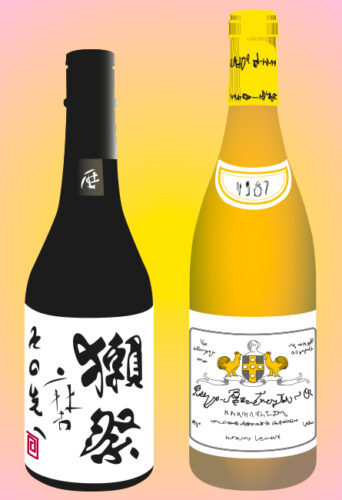
For its next wine Masterclass in Geneva, Baghera/wines highlights one of Champagne's icons: Krug, and its emblematic cuvée “Vintage”.
We will taste 10 bottles of the 2003 to 1976 vintages.
- 2003
- 2002
- 1998
- 1996
- 1990
- 1988
- 1985
- 1982
- 1979
- 1976
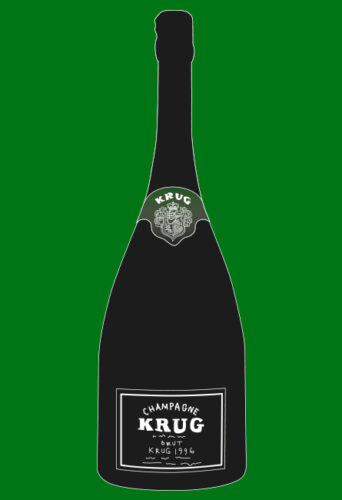
For its next wine Masterclass in Geneva, Baghera/wines highlights the rare Crimean wines of Massandra. The experts' office invites wine lovers to taste 12 differents wines from 1929 to 1948.
Dominique Fornage will lead this masterclass around the 12 vintages of Massandra:
- Massandra Black Muscat Tavrida 1948
- Massandra Pedro Krimski 1947
- Massandra White Muscat Castil 1947
- Massandra White Porto Surog 1947
- Massandra Pink 1946
- Massandra White Muscat Selection 1944
- Massandra Pink Muscat Alupka 1940
- Massandra Pink Muscat Gursuf 1939
- Massandra Tokay Aluschta 1938
- Massandra Black Muscat Tavrida 1938
- Massandra Cabernet-Sauvignon White Port 1936
- Massandra Pinot Gris Ai-Danil 1929
Let's go further…
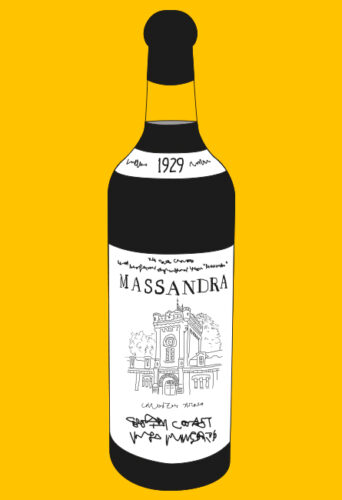
Baghera/wines honors the great Australian Syrahs and invites wine lovers to come and taste 11 vintages of the illustrious and extremely rare Hill of Grace (Henschke).
Dominique Fornage will host this truly exceptional and historic evening.
Hill of Grace is the name of both the vineyard and the wine that has so beguiled lovers of Australian Shyraz.
The 4 hectares plot of vine is located in the Eden Valley (Australia) near Barossa, and was originally planted in en 1862 (1ha) by Johann Christian Henschke, then gradually extended in 1910, 1951, 1952, 1956 and 1965 to 4 hectares.
The vines are run according to the principles of biodynamic agriculture. Cyril Henschke created the first Hill of Grace in 1958, the average annual production being 6'000 - 7'000 bottles.
11 vintages…
- 2009
- 2005
- 2004
- 2001
- 1998
- 1997
- 1996
- 1992
- 1991
- 1989
- 1988
- 1987
- 1985
Let's go further
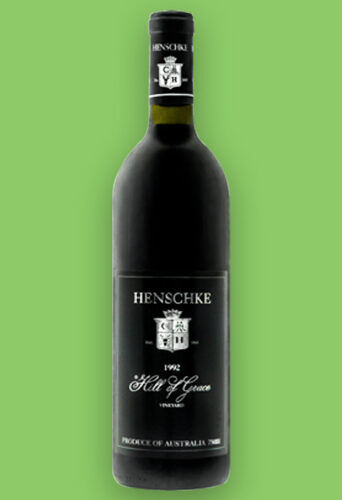
Baghera/wines inaugurates its season of great tastings with an original moment – a masterclass that many are waiting for, the 10 vintages of Porto “Garrafeira” from Niepoort.
Niepoort is an independent family business founded 150 years ago and based in Vila Nova de Gaia, Portugal. Through five generations, the business passed successfully from one Niepoort to the next Niepoort since its foundation in 1842 by Franciscus Marius Niepoort.
Franciscus Marius Niepoort, originally from Holland, settled in Porto in 1842 and carried on the wine trade there. Shortly after, he founded his business. The house became more visible with the arrival of Dirk Niepoort (5th generation), who enjoys international esteem for his talents recognized within his own house, and whose echoes also benefit other producers in the region...
Dominique Fornage will host this exceptional and historic tasting of the 10 vintages of Garrafeira produced by the house of Niepoort:
- 1931
- 1933
- 1938
- 1940
- 1948
- 1950
- 1952
- 1964
- 1967
- 1977
Let's go further…
